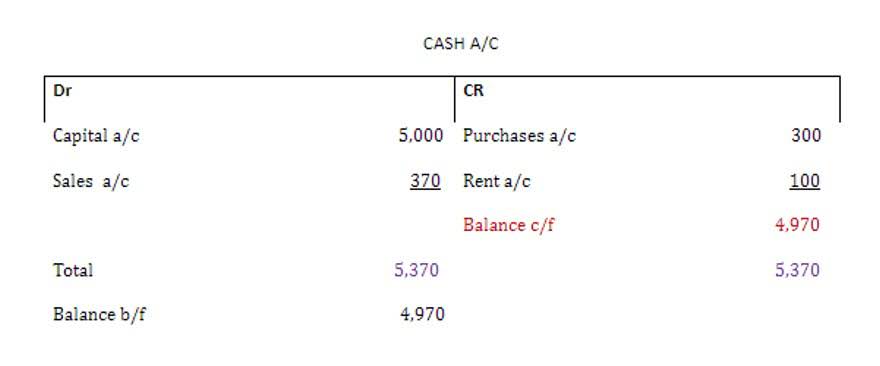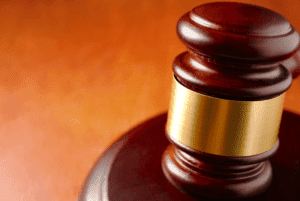Liabilities: Definition, Types and Equation

It’s important to differentiate between short-term and long-term liabilities, as well as to keep them in check to maintain a strong financial position. Common liabilities include accounts payable, which shows money owed for goods and services. A liability is a debt that a person or organization owes, frequently in the form of cash. Liabilities are eventually settled through the transfer of economic advantages like cash, goods, or services.
- Long-term debt is any interest or principal on bonds that is not due within the next twelve months.
- A balance sheet, however, is only as accurate as the information and calculations used to generate it.
- In this regard, it can be seen that almost all businesses work on credit.
- Liabilities can be individual debts or the financial obligations of a business.
- Short-term debt is what a company owes on loan interest or principal on bonds it has issued that is due within the next year.
- Understanding criteria, accurate calculations, and prompt payments are key for individuals with irregular income.
- Examples of accrued expenses include interest owed on loans payable, cost of electricity used, and repair expenses that occurred at the end of the accounting period.
Credit Due to Customers
They typically represent significant financial commitments that impact a company’s long-term financial planning. These liabilities offer insight into a company’s long-term financial strategies. Also, liabilities can be current or non-current based on when they need to be paid. For example, salaries owed are current liabilities, but a mortgage is a non-current liability. This is the single most important equation that you are likely to come across in credit accounting.
- For example, ABC Corporation signs a five-year lease deal for office space with monthly payments of ₹5,000.
- Tangible assets are physical items such as equipment, inventory, land, buildings, and supplies.
- Long-term liabilities are debts not expected to be paid off in the next twelve months.
- Lenders, investors, and buyers may also look at it when assessing a company’s financial position.
- Imagine you’re juggling your financial responsibilities, like paying off loans or credit card bills.
- It cannot be avoided because it is normal and the general practice of businesses.
- These obligations are necessary for companies to function and create value.
Small Businesses
- These expenses include items like salaries, taxes, utilities, and interest.
- By leveraging advanced bookkeeping services, businesses can enhance profitability, improve budgeting, and navigate tax compliance with greater confidence—all without hiring a full-time CFO.
- Accrued expenses are liabilities that arise when a company incurs expenses but hasn’t yet made the corresponding payment.
- They encompass loans, credit card debt, mortgages, and other outstanding commitments.
- This equation ensures that every transaction keeps your company’s finances in balance.
- This is the single most important equation that you are likely to come across in credit accounting.
- Non-current liabilities are typically viewed as long-term obligations because they are anticipated to last more than a year (12 months or greater).
Accounts payable is a common example of adjusting entries a current liability, which is essentially the money owed to manufacturers. Liability and debt are often used in the same way, but they mean different things. The accounting treatment for credit that is due from customers is similar to that of a current liability. There might be a number of different reasons as to why credit might be due from customers.

Optimizing Accounting Reserve Account Management Strategies

This calculation involves comparing the total liabilities with the total assets. These debts could be mortgages, pending bills, bank loans, or any amounts of money that you owe to people or organizations. The entire number of liabilities must match the difference between the total amount of assets and the total amount of equity, according to the accounting equation. By examining the liability section of the balance sheet, investors can assess both the company’s current payment responsibilities and its long-term financial strategies. Long-term debt is any interest or principal on bonds that is not due within the next twelve months. Any mortgage payments scheduled beyond the next twelve months would fall into this category.
- By sorting liabilities into current and non-current, contingent, and legal debts, analysts and investors can see the financial setup of a company more clearly.
- Liabilities are a broader category that includes both agreed and not agreed obligations.
- An accountant can also audit a balance sheet, prepare income and cash flow statements, and assist with tax preparation, securing funding, succession planning, growth strategies, and more.
- Liability and debt are often used in the same way, but they mean different things.
- Basically, anything that requires you to repay money falls under the category of liabilities.
- Liabilities can include loans, credit card debt, mortgages, and any other outstanding financial commitments.
Current Liabilities

If a business’s liabilities are greater than its assets, equity will be negative. These types of liabilities can be a bit more complex, but understanding the basics is key. When you’re dealing with liabilities, it’s essential to understand the different types that exist. Liabilities can be a complex and daunting topic, but understanding them is crucial for making informed business decisions. Just like situations where businesses get credit from external sources, it can be seen that credit can also be extended to customers. Credit is unavoidable because it takes considerable time for products to be in a sellable condition, and in the meantime, they might not have the resources to pay their suppliers upfront.
Short-term Loans
Balance sheets help business owners understand the financial health of their business. For instance, business owners could decide to pay off debts to reduce liabilities on the balance sheet. The balance liabilities are the amounts of money due to others that need to be paid now. sheet can also provide data crucial for tax calculations, such as asset depreciation and labor costs. Lease Obligations are an important type of liability that companies must manage to ensure their financial stability. By understanding the characteristics of Lease Obligations, businesses can make informed decisions about their financial commitments and maintain a healthy balance sheet.


When the art gallery entered virtual accountant into its second year, Amrish hired the services of a bookkeeping service. The first thing the accountant did was to make a list of his liabilities and shared the figures with Amrish. Convertible debt is another important term investors need to know if they want to analyze a company’s balance sheet. It is debt that, in lieu of being paid off, can be converted into stock ownership at a certain date at an agreed-upon price. Other long-term liabilities can include things such as back taxes for which a company has agreed to a multiyear payment plan or pension liabilities. A balance sheet, however, is only as accurate as the information and calculations used to generate it.
Current vs. Long-Term Liabilities Explained
They are usually formal written promises to pay the principal amount within one year of the balance sheet date. For example, when a company borrows money from a bank, it creates a financial liability. In another case, if a business buys products on credit, it creates a liability to pay the supplier later. Knowing about these various types of liabilities is very important for people and businesses to manage their money well.